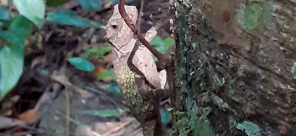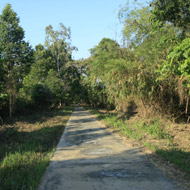Birds of Vietnam, Bird Species in Vietnam

Let's join AdventureGreen on our bird quests to learn about the different birds and bird species in Vietnam. Here you can find out more about the birding spots that these bird species are found.
- Order: Charadriiformes
- Family: Scolopacidae
- Genus: Actitis
Common sandpiper (Choắt nhỏ, Actitis hypoleucos)
The Common Sandpiper (Actitis hypoleucos, Choắt nhỏ) is a small Palearctic wader species, family of Scolopacidae, genus Actitis.
The Terek Sandpiper (Xenus cinereus, Choắt chân màng bé) is a small migratory wader species, family of Scolopacidae, genus Xenus. Terek Sandpiper is a pass-through winter bird commonly sighted at the Xuan Thuy National Park.
- Order: Charadriiformes
- Family: Scolopacidae
- Genus: Tringa
Wood sandpiper (Choắt bụng xám, Tringa glareola)
The Wood Sandpiper (Tringa glareola, Choắt bụng xám) is a small wader in the large family Scolopacidae, sandpiper, Tringa genus. Wood Sandpiper is a pass-through winter bird commonly sighted at the Xuan Thuy National Park.
The term Charadriiformes comes from New Latin, combining the Greek word kharadrios ("a bird of river valleys" or "a bird of ravines") and the Latin suffix -formes meaning "forms" or "shaped like". Therefore, Charadriiformes translates to "birds shaped like or resembling the charadrius," which is a type of plover or stone curlew historically found in dry river beds or ravines.
The word Scolopacidae is New Latin, derived from the genus name Scolopax (Latin for "snipe" or "woodcock") and the common zoological suffix for family names, -idae.
The name Tringa comes from the Ancient Greek word trungas, meaning "wader".
The specific epithet glareola is from Latin glarea, " gravel".
Glareola is a Latin word that means "gravel," derived from glarea, a diminutive of "gravel". The name likely refers to the patterns on the back of the bird.
Diminutive suffix: The name uses the diminutive suffix "-ola," turning "gravel" into "little gravel".
- Order: Charadriiformes
- Family: Scolopacidae
- Genus: Tringa
Common greenshank (Choắt lớn, Tringa nebularia)
The Common Greenshank (Tringa nebularia, Choắt lớn) is a wader in the large family Scolopacidae, sandpiper, Tringa genus.
The bird breeds from northern Scotland eastwards across northern Europe and east across the Palearctic.
This species is a migratory species, wintering in Africa, the Indian subcontinent, and Australasia, usually on fresh water.
The term Charadriiformes comes from New Latin, combining the Greek word kharadrios ("a bird of river valleys" or "a bird of ravines") and the Latin suffix -formes meaning "forms" or "shaped like". Therefore, Charadriiformes translates to "birds shaped like or resembling the charadrius," which is a type of plover or stone curlew historically found in dry river beds or ravines.
The word Scolopacidae is New Latin, derived from the genus name Scolopax (Latin for "snipe" or "woodcock") and the common zoological suffix for family names, -idae.
The name Tringa is the Neo-Latin name given to the green sandpiper based on Ancient Greek trungas, a thrush-sized, white-rumped, tail-bobbing wading bird mentioned by Aristotle.
The specific nebularia is from Latin nebula "mist".
Common Redshank (Tringa totanus, Choắt nâu) is an Eurasian wader, Scholopacidae family, tringa genus. The bird is a winter pass-through bird, commonly sighted at the Xuan Thuy National Park.
The Far Eastern Curlew (Numenius madagascariensis, Choắt mỏ cong hông nâu) is a large shorebird in the large family Scolopacidae, Numenius.
The Eurasian whimbrel or common whimbrel (Numenius phaeopus) is a wader in the large family Scolopacidae, the genus Numenius. The whimbrel is a passthrough, winter bird commonly sighted at the Xuan Thuy National Park.
Bar-tailed Godwit (Limosa lapponica, Chắt mỏ thẳng đuôi vằn) is a migratory bird and commonly found at the Giao Thuy National Park during the winter time.
- Order: Charadriiformes
- Family: Scolopacidae
- Genus: Gallinago
Wood snipe (Dẽ giun lớn, Rẽ giun lớn, Gallinago nemoricola)
The wood snipe (Gallinago nemoricola) is a species of snipe which breeds in the Himalayas of northern India, Nepal, Bhutan and southern China.
In winter, it occurs at lower altitudes in the Himalayas, as a regular visitor in small numbers to north Vietnam.
The term Charadriiformes comes from New Latin, combining the Greek word kharadrios ("a bird of river valleys" or "a bird of ravines") and the Latin suffix -formes meaning "forms" or "shaped like". Therefore, Charadriiformes translates to "birds shaped like or resembling the charadrius," which is a type of plover or stone curlew historically found in dry river beds or ravines.
The word Scolopacidae is New Latin, derived from the genus name Scolopax (Latin for "snipe" or "woodcock") and the common zoological suffix for family names, -idae.
The scientific name gallinago is Neo-Latin for a woodcock or snipe from Latin gallina, "hen" and the suffix -ago, "resembling".
Nemoricola is a Latin term that means "woodland-dweller" or "forest-dweller". It is derived from the Latin word nemus, nemoris meaning "forest" or "woodland," and the Latin suffix -cola, meaning "inhabitant" or "dwelling".
- Order: Charadriiformes
- Family: Scolopacidae
- Genus: Gallinago
Common snipe (Rẽ giun, Gallinago gallinago)
The common snipe (Gallinago gallinago) is a small, stocky wader native to the Old World, belonging to the sandpiper family Scolopacidae.
The term Charadriiformes comes from New Latin, combining the Greek word kharadrios ("a bird of river valleys" or "a bird of ravines") and the Latin suffix -formes meaning "forms" or "shaped like". Therefore, Charadriiformes translates to "birds shaped like or resembling the charadrius," which is a type of plover or stone curlew historically found in dry river beds or ravines.
The word Scolopacidae is New Latin, derived from the genus name Scolopax (Latin for "snipe" or "woodcock") and the common zoological suffix for family names, -idae.
The scientific name gallinago is Neo-Latin for a woodcock or snipe from Latin gallina, "hen" and the suffix -ago, "resembling".
- Order: Charadriiformes
- Family: Scolopacidae
- Genus: Gallinago
Pin-tailed snipe or pintail snipe (Rẽ giun Á châu, Gallinago stenura)
The pin-tailed snipe or pintail snipe (Gallinago stenura) is a species of bird in the family Scolopacidae, the sandpipers.
The bird breeds in northern Russia and migrates to spend the non-breeding season in southern Asia from Pakistan to Indonesia.
This bird species is the most common migrant snipe in southern India, Sri Lanka and much of Southeast Asia.
The term Charadriiformes comes from New Latin, combining the Greek word kharadrios ("a bird of river valleys" or "a bird of ravines") and the Latin suffix -formes meaning "forms" or "shaped like". Therefore, Charadriiformes translates to "birds shaped like or resembling the charadrius," which is a type of plover or stone curlew historically found in dry river beds or ravines.
The word Scolopacidae is New Latin, derived from the genus name Scolopax (Latin for "snipe" or "woodcock") and the common zoological suffix for family names, -idae.
The genus name gallinago is Neo-Latin for a woodcock or snipe from Latin gallina, "hen" and the suffix -ago, "resembling".
stenura: From Ancient Greek στενός (stenós, “narrow”); -ouros -tailed.
- Order: Passeriformes
- Family: Leiothrichidae
- Genus: Trochalopteron
Golden-winged laughingthrush
(Khướu Ngọc Linh, Trochalopteron ngoclinhense)
The golden-winged laughingthrush (Trochalopteron ngoclinhense) is a species of bird in the family Leiothrichidae. It is endemic to Vietnam.
Leiothrix Leiothrichidae Ancient Greek leios meaning "smooth" and thrix meaning "hair".
Trochalopteron: the Ancient Greek trokhalos meaning "round" or "bowed" with pteron meaning "wing".






































